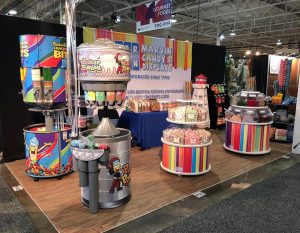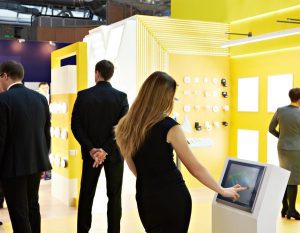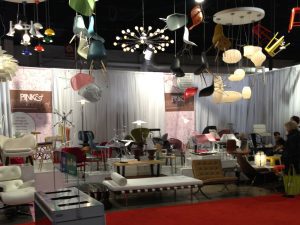In the ever-evolving landscape of events and exhibitions, experiential exhibits have emerged as a game-changer, offering a dynamic and immersive approach to engage audiences. Unlike traditional displays that rely solely on visual appeal, experiential exhibits go beyond the surface, creating memorable interactions that leave a lasting impact on attendees. Let’s explore the transformative power of experiential exhibits and how their unique qualities contribute to an unparalleled event experience.

Credit: Beaumont Exhibits
In the ever-evolving landscape of events and exhibitions, experiential exhibits have emerged as a game-changer, offering a dynamic and immersive approach to engage audiences. Unlike traditional displays that rely solely on visual appeal, experiential exhibits go beyond the surface, creating memorable interactions that leave a lasting impact on attendees. Let’s explore the transformative power of experiential exhibits and how their unique qualities contribute to an unparalleled event experience.

Credit: Beaumont Exhibits
Experiential exhibits are designed to actively involve attendees, encouraging them to participate, touch, feel, and immerse themselves in the brand or product being showcased. These exhibits move beyond the one-dimensional, static displays, opting for an interactive and multi-sensory experience that captivates the audience.
Experiential exhibits redefine the way brands connect with their audience. By providing a hands-on experience, these exhibits create a two-way interaction that fosters a deeper connection. Attendees become active participants rather than passive observers, resulting in a more meaningful and memorable engagement.
Whether it’s a product demonstration, a virtual reality experience, or a live performance, experiential exhibits break down the barriers between brands and their audience. This level of engagement is particularly powerful in a world where attention spans are short, and the competition for capturing audience interest is fierce.
One of the key advantages of experiential exhibits is their adaptability and potential for reuse. Unlike traditional displays that may become outdated or lose relevance over time, experiential exhibits can be designed with modularity and flexibility in mind. This means that the core concept or structure of the exhibit can be retained, while elements such as graphics, technology, and interactive components are updated or modified to suit changing needs.
The ability to reuse experiential exhibits aligns with the growing emphasis on sustainability in the event industry. Rather than creating and discarding elaborate sets for each event, brands can invest in durable and modular structures that can be easily refreshed or repurposed. This not only reduces environmental impact but also provides a cost-effective solution for brands looking to maintain a consistent and impactful presence at multiple events.

Credit: Beaumont Exhibits

Credit: Beaumont Exhibits

Credit: Beaumont Exhibits
In a world where experiences are increasingly valued, experiential exhibits provide a powerful platform for brands to connect with their audience on a deeper level. The ability to reuse and adapt these exhibits speaks to their sustainability and long-term impact.
By investing in experiences that resonate, brands can create a meaningful and enduring connection with their audience, ensuring that their presence is not just seen but genuinely felt at every event. Embrace the transformative potential of experiential exhibits to elevate your brand engagement and leave an indelible mark on your audience.